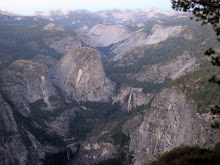Field Ecology - EEOB 513

This is our Field Ecology class, taught by Doug Kane (upper left, in green). I'm in the front wearing white. I really enjoyed the course, I learned a lot and had fun too. It's a pretty intense course, but it gives a great introduction to ecology with a solid background in statistics. It gave me a lot of ideas to use for the course I will teach to my high school students next summer. I'll post some pictures to give an idea of what was covered in the course.

 While on Kelley's, we stopped to see the glacial grooves
While on Kelley's, we stopped to see the glacial grooves




